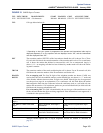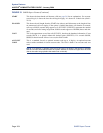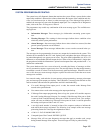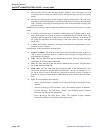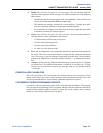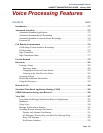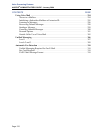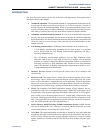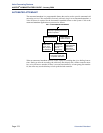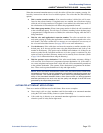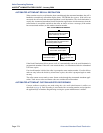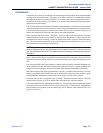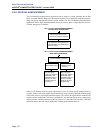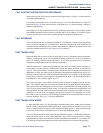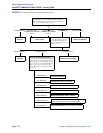
Page 271
Voice Processing Features
AXXESS
®
ADMINISTRATOR’S GUIDE – January 2004
Introduction
INTRODUCTION
The Voice Processor can be used for any of the following applications. Each application is
described in detail in this chapter.
• Automated Attendant: The automated attendant is a programmable feature that can be
used to provide automated call answering service. Calls can transfer, forward, or
directly ring in to an automated attendant. When an automated attendant answers a call,
it plays a recording that gives dialing instructions. After hearing the recording (or at any
time while it is playing), the caller may then dial an extension or mailbox number.
• Automated Attendant Recall Destination: If a call is not answered after being trans-
ferred by the automated attendant, the call returns to (recalls) the Automated Attendant
Recall Destination. The Recall Destination announces that the station is unavailable and
allows the caller to leave a message (if the station has an associated mailbox) or dial
another extension.
• Call Routing Announcement: Call Routing Announcements can be used two ways:
— A Call Routing Announcement application can be used in place of a playback
device. When called, the Call Routing Announcement application will play a
recording and then hang up.
— The Call Routing Announcement application can use Digit Translation which
allows the caller to press a single digit for access to a mailbox, a fax-on-demand
function, or a station or hunt group that has an associated mailbox or extension ID.
Each digit can lead to a “digit translation node” that has its own digit translation
values. This layered Call Routing Announcement digit translation creates a “tree”
of programmable digit translation nodes.
• Directory Services: Directory services provide callers with a list of mailboxes and
extension IDs.
• Record-A-Call: This feature allows a station user to record an ongoing call in a mail-
box message. When a station user enters the Record-A-Call feature code, the system
places a call to the station’s assigned Record-A-Call application. When the application
answers, the system sets up a conference call with the station’s Record-A-Call mailbox.
If programmed, the mailbox plays a greeting to indicate that recording is in progress.
• STAR: The Scheduled Time-Based Application Routing (STAR) enhances the pro-
grammability of the voice mail application greetings. With STAR, applications can be
programmed to play alternative greetings for holidays and weekends. A STAR applica-
tion is a table of up to 20 entries, that serves as a “routing table” which tells the Voice
Processor which application will be used, based on day and time information in the
table. (The applications are programmed to play the greetings, not the STAR applica-
tion. The STAR routes the call to the right application.)
• Station Message Detail Recording (SMDR) Information Storage: SMDR informa-
tion can be stored on the Voice Processor’s hard disk and then processed using call
record sorting software, such as Inter-Tel’s Inside Track
®
.
• Voice Mail: This application handles all calls that are directed to voice mail (other than
through the Message Notification/Retrieval application) by subscribers and non-sub-
scribers. Callers will hear the main company greeting, followed by a menu of available
options. Stations can forward or transfer calls directly to their mailbox using this appli-
cation’s.



